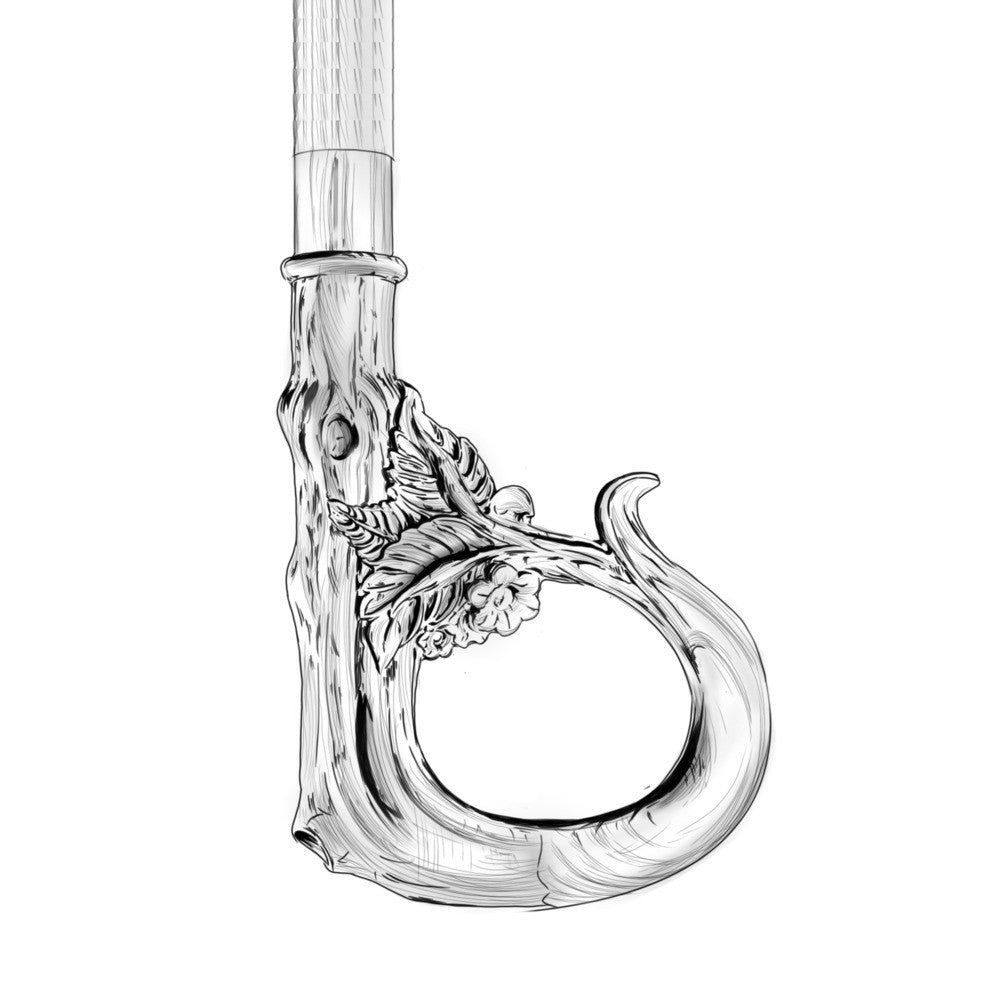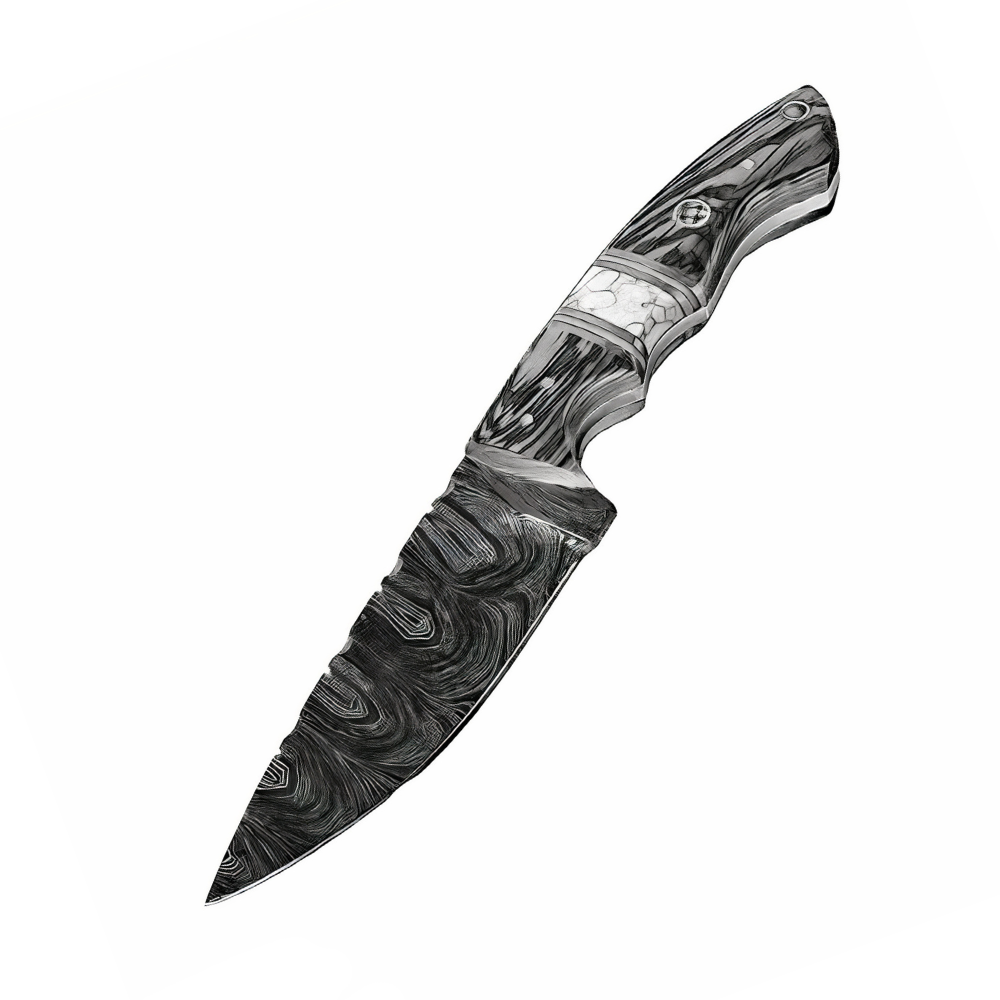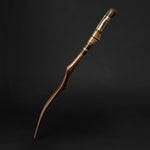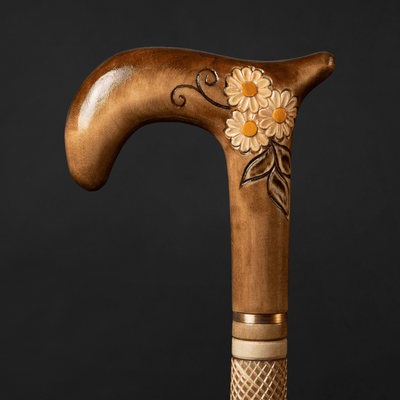You have no items in your shopping cart.
Recent Posts
-
The Art of Christmas Design: Walking Canes That Celebrate the Season in Style
-
How an Ergonomic Walking Cane Handle Prevents Hand and Wrist Strain?
-
How to Walk With a Cane Correctly to Avoid Back or Shoulder Strain?
-
5 Common Mistakes People Make When Buying a Walking Cane (and How to Avoid Them)
-
How to Choose a Walking Cane That Reflects Your Personality (Not Just Your Needs)?
-
Walking Canes That Match Formalwear for Weddings and Events
MOST POPULAR NOW
10
Nov
In the world of mobility assistance devices, classic walking canes and modern mobility aids are two distinct categories that have served individuals with different needs and preferences. While the choice between these two options may seem straightforward, there are various nuances and considerations to keep in mind when deciding which one is best suited for your unique requirements.
Classic walking canes vs. modern mobility aids: pros and cons
Classic walking canes, often referred to simply as "walking canes," are traditional and time-tested mobility aids that have been in use for centuries. They consist of a single, straight shaft with a handle at the top. These canes are typically crafted from materials like wood, metal, or even carbon fiber for a blend of aesthetics, durability, and weight.
One of the defining characteristics of classic walking canes is their versatility. They are available in various styles, such as the standard single-point cane, quad canes with four support points at the base, and even folding canes for easy storage. The variety of handle shapes and materials provides options for individuals with different grip preferences and specific medical conditions.
Classic walking canes have an undeniable aesthetic appeal. They come in a wide array of designs and finishes, making it possible for individuals to choose a cane that complements their personal style. From elegant wooden canes to sleek and modern metal designs, these canes can be both functional and fashionable.
Benefits of classic canes
-
Stability: Classic canes provide stable support, making them suitable for individuals with balance issues or mild mobility challenges.
-
Customization: With a vast selection of handle styles and materials, classic canes can be customized to cater to individual needs.
-
Timeless Elegance: These canes are a symbol of timeless elegance and can be an accessory rather than just a mobility device.
Definition of modern mobility aids
Modern mobility aids encompass a wide range of devices designed to enhance the mobility and independence of individuals with various physical challenges. These aids have evolved significantly in recent years, incorporating cutting-edge technology and ergonomic design to offer superior performance and comfort.
Types of modern mobility aids
-
Rollators: Rollators are four-wheeled walking aids that provide stability and come equipped with a seat and storage space. They are excellent for those who require frequent rests during walking.
-
Electric mobility scooters: These battery-powered scooters offer an efficient and effortless way to move around, particularly for those with more significant mobility limitations.
-
Crutches: Modern crutches have advanced in design, providing improved comfort and support to those who need them.
-
Wheelchairs: Manual and electric wheelchairs have seen substantial advancements in terms of weight, maneuverability, and comfort.
Modern mobility aids prioritize user comfort and convenience. They often feature padded seats, ergonomic handles, adjustable heights, and are lightweight for ease of use. Electric mobility aids, in particular, come with features like digital displays, variable speed control, and long-lasting batteries.
Benefits of modern mobility aids
-
Improved mobility: Modern mobility aids offer enhanced mobility, allowing individuals to cover greater distances with less effort.
-
Comfort and ergonomics: They are designed with user comfort in mind, reducing strain and fatigue during use.
-
Adaptability: These aids can be adjusted to suit the user's specific needs, making them versatile and accommodating various medical conditions.
The comparison between classic walking canes and modern mobility aids is significant because it helps individuals make informed decisions when choosing the right mobility assistance device for their needs. Here are some key considerations:
When deciding between a classic walking cane and a modern mobility aid, it's essential to assess your specific mobility requirements. Consider factors such as the distance you need to travel, your level of stability, and any physical limitations you may have.
Your personal preferences play a vital role in your choice of mobility aid. If aesthetics and style are important to you, classic walking canes offer a wide range of options to match your taste. On the other hand, modern mobility aids prioritize comfort and advanced features.
Understanding your medical condition is crucial in making the right choice. Consult with a healthcare professional or physical therapist to determine which type of mobility aid best suits your condition and promotes your well-being.
Classic walking canes are generally more budget-friendly compared to some modern mobility aids, which can be more expensive due to advanced technology and features. It's essential to factor in your budget when making a decision.
In conclusion, the choice between classic walking canes and modern mobility aids is a significant decision that can greatly impact your daily life. Each type of mobility aid has its unique advantages and considerations, and the right choice depends on your individual needs, preferences, and medical condition. By understanding the differences and considering the factors mentioned, you can make an informed decision that enhances your mobility and overall quality of life.
Historical perspective
Walking canes have a rich and fascinating history that stretches back through the ages. These simple yet highly effective mobility aids have evolved significantly, offering support, stability, and style to individuals throughout history.
The use of walking canes can be traced back to ancient civilizations. In many ancient cultures, a walking stick was a symbol of power and authority. It was not just a tool for mobility but a sign of social status. Pharaohs in ancient Egypt and emperors in Rome were often depicted with ornate canes as a symbol of their prestige.
During the Renaissance period, walking canes became intricately designed fashion accessories. They were often crafted from exotic materials, including ivory, gold, and precious gems. These canes were no longer just for support; they were pieces of art that reflected the owner's taste and wealth.
The 19th century marked a turning point in the evolution of walking canes. They became more functional and accessible to the general public. With the industrial revolution, canes started to be mass-produced, making them more affordable. This era also saw the development of various cane styles, including the classic single-point cane and quad canes for enhanced stability.
In the 20th century, walking canes started to incorporate modern materials like aluminum and carbon fiber, offering a balance of durability and lightness. The focus shifted towards ergonomics and user comfort. Various handle styles were developed to cater to different grip preferences and medical needs.
While walking canes have a long history, the emergence of modern mobility aids represents a significant shift in the way we approach mobility and independence.
The mid-20th century saw major advancements in assistive technology, driven in part by the needs of injured veterans returning from World War II. This period gave rise to innovations such as the manual and electric wheelchairs, crutches, and other mobility aids. These devices were designed with a focus on improving the quality of life for those with mobility challenges.
With the advent of the digital age, mobility aids have undergone a technological revolution. Electric mobility scooters, for example, now feature sophisticated control systems, long-lasting batteries, and digital displays. These aids provide individuals with a level of freedom and independence that was previously unimaginable.
Modern mobility aids have become highly adaptable and customizable. Users can adjust the height, seating, and control features to meet their specific needs. These aids cater to a wide range of medical conditions and offer a level of comfort and support that is essential for those with mobility challenges.
The evolution of walking canes and the emergence of modern mobility aids have had a profound impact on the lives of individuals with mobility challenges. Here are some of the key ways in which these devices have influenced mobility and independence:
Walking canes and modern mobility aids have significantly increased the mobility of individuals with physical limitations. They provide the means to move around, access public spaces, and engage in daily activities with greater ease.
These mobility aids have empowered individuals to lead more independent lives. They can go shopping, visit friends, travel, and participate in social activities without feeling limited by their mobility challenges.
The availability of modern mobility aids has greatly improved the overall quality of life for many people. They offer not only physical support but also psychological benefits, as individuals gain confidence and a sense of self-sufficiency.
The widespread use of mobility aids has contributed to a more inclusive society. Public spaces and buildings are increasingly designed to accommodate individuals with mobility challenges, making the world more accessible to everyone.
In conclusion, the historical evolution of walking canes and the emergence of modern mobility aids have transformed the way we view and experience mobility and independence. These devices have come a long way from being symbols of power to essential tools for enhancing the lives of individuals with mobility challenges. As technology continues to advance, we can expect even more innovations that will further improve the quality of life for those in need.

Pros of classic walking canes
Classic walking canes have stood the test of time and continue to be a popular choice for many individuals seeking reliable mobility assistance. Here are some of the key advantages of using classic walking canes:
Time-tested reliability
One of the most significant advantages of classic walking canes is their time-tested reliability. These canes have been in use for centuries and have proven to be dependable tools for enhancing stability and balance.
Steady support
Classic canes offer a stable and consistent source of support, making them ideal for individuals who may experience occasional balance issues or need assistance with walking. The single-point design provides a reliable point of contact with the ground, which helps users maintain their balance.
Proven durability
Traditional walking canes are often constructed from durable materials such as wood, metal, or carbon fiber. This durability ensures that they can withstand regular use and remain in good condition over an extended period.
Simplicity and low maintenance
Classic walking canes are celebrated for their simplicity and low maintenance requirements. These qualities make them an attractive choice for many users.
Ease of use
Classic canes are easy to use and require minimal training or adjustment. Users can start benefiting from their support almost immediately without the need for complex instructions or setup.
Minimal maintenance
Maintaining a classic walking cane is straightforward. Regular cleaning and occasional inspections for wear and tear are usually sufficient to keep the cane in good working condition. There are no batteries to charge or intricate mechanisms to worry about.
Cost-effectiveness
Cost-effectiveness is another notable advantage of classic walking canes. These mobility aids are often more budget-friendly compared to modern mobility devices.
Affordable options
Classic canes come in a wide range of price points, making them accessible to individuals with varying budgets. Whether you prefer a basic wooden cane or a more sophisticated metal design, you can find an option that suits your financial constraints.
Long-term investment
Classic walking canes are built to last. Their durability and timeless design mean that they can serve users for an extended period, making them a long-term investment that provides ongoing value.
In conclusion, classic walking canes offer several compelling advantages, including time-tested reliability, simplicity, low maintenance, and cost-effectiveness. These factors make them a popular choice for individuals seeking dependable mobility assistance that fits their budget and lifestyle. Whether you appreciate the elegance of a wooden cane or the functionality of a metal one, classic canes continue to provide essential support for users of all ages.
Cons of classic walking canes
While classic walking canes have their merits, they are not without their drawbacks. It's essential to consider these limitations when choosing a mobility aid that suits your needs.
Limited support and features
Classic walking canes are designed primarily for balance assistance, but they have limitations when it comes to supporting substantial weight. They may not be the ideal choice for individuals with more severe mobility challenges, such as those who require substantial weight-bearing support.
Compared to modern mobility aids like rollators or electric scooters, classic walking canes offer limited stability. They require users to have some degree of balance and strength, which can be challenging for those with severe mobility limitations or conditions affecting their stability.
Classic canes lack the advanced features found in modern mobility aids. They do not incorporate technological advancements, like adjustable heights, digital displays, or ergonomic handles, which can greatly enhance user comfort and convenience.
Stigmatization and image
For some individuals, using a classic walking cane may be associated with a sense of stigmatization or embarrassment. This perception can deter people from using a cane, even if it could significantly improve their mobility and independence.
Classic canes are sometimes associated with aging or disability, perpetuating negative stereotypes. This can impact an individual's self-esteem and how others perceive them, potentially leading to social discomfort.
Limited adaptability
Classic walking canes may not be adaptable to specific medical conditions or unique mobility requirements. Individuals with complex mobility challenges may find that a one-size-fits-all approach does not meet their individual needs.
For those who require assistance over longer distances or extended periods, classic canes may not be the most suitable choice. They can be tiring to use for extended walks or outings, leading to discomfort and fatigue.
Unlike some modern mobility aids like rollators, classic walking canes do not offer a seating option. This can be inconvenient for individuals who need to take frequent breaks during their walks or outings.
In summary, classic walking canes, while offering simplicity and reliability, come with limitations. They may not provide adequate support and features for individuals with severe mobility challenges. Moreover, the stigmatization and negative image associated with classic canes can discourage their use. Additionally, their limited adaptability may not meet the specific needs of some users, especially when it comes to extended use or complex mobility requirements.
Pros of modern mobility aids
Modern mobility aids have revolutionized the world of mobility assistance, offering numerous benefits to individuals with various physical challenges. Here are some of the key advantages of using modern mobility aids:
Advanced features and technology
Modern mobility aids are packed with advanced features and cutting-edge technology, which set them apart from classic walking canes and other traditional mobility devices.
Many modern mobility aids are designed with user comfort in mind. They often feature ergonomic handles, adjustable heights, and padded seats, reducing strain and discomfort during use.
Electric mobility scooters and some other modern aids integrate technology seamlessly. They come equipped with features like digital displays, variable speed control, and long-lasting batteries, enhancing convenience and usability.
Modern mobility aids offer a high degree of customization. Users can adjust the settings to cater to their specific needs, ensuring a personalized and comfortable experience.
Enhanced support and comfort
One of the most significant advantages of modern mobility aids is their ability to provide superior support and comfort to individuals with mobility challenges.
Modern mobility aids, such as rollators and wheelchairs, offer increased stability compared to classic walking canes. This enhanced stability is crucial for those with balance issues or more severe mobility limitations.
Modern mobility aids are better equipped to support individuals with varying degrees of weight-bearing requirements. They can accommodate a broader range of users, making them suitable for a diverse population.
Several modern mobility aids, like rollators and electric scooters, come with built-in seating options. This feature allows users to rest or take a break during their journeys, making them particularly convenient for extended outings.
Improved independence
Modern mobility aids have a transformative impact on the independence and quality of life of individuals with mobility challenges.
These aids significantly improve mobility, allowing users to cover greater distances with less effort. This increased mobility enables individuals to engage in various daily activities and enjoy a more active lifestyle.
Modern mobility aids empower users to lead more independent lives. They can go shopping, visit friends and family, travel, and participate in social activities with a level of freedom that was previously unattainable.
The independence and enhanced mobility provided by modern mobility aids offer significant psychological benefits. Users often experience increased self-confidence, reduced feelings of isolation, and an improved overall quality of life.
In conclusion, modern mobility aids offer a wealth of advantages, including advanced features and technology, enhanced support and comfort, and improved independence. These aids have significantly transformed the lives of individuals with mobility challenges, providing them with the tools they need to lead more active, comfortable, and independent lives. Whether it's the advanced technology integrated into electric mobility scooters or the ergonomic design of rollators, modern mobility aids continue to advance, further enhancing the quality of life for users.
Cons of modern mobility aids
While modern mobility aids offer a plethora of benefits, they are not without their drawbacks. It's essential to consider these limitations when choosing a mobility aid that suits your needs.
Higher cost and maintenance
Modern mobility aids, with their advanced features and technology, tend to come with a higher initial cost compared to classic walking canes. This can be a significant barrier for individuals on a tight budget or those without insurance coverage.
Maintaining modern mobility aids can also be more expensive. Electric mobility scooters, for example, may require periodic servicing and battery replacement, incurring additional costs over time.
Learning curve and technology hurdles
Using modern mobility aids often comes with a learning curve, especially for those who are new to these devices. Mastering the controls and features can take time and patience, which can be challenging for some users.
Not everyone is comfortable with technology. Some individuals may find it challenging to adapt to mobility aids with digital displays, variable speed controls, or other advanced features, which can lead to frustration and potential safety concerns.
Battery dependency
Modern mobility aids are often battery-powered, which means they have a limited range before requiring recharging. This limitation can be frustrating, especially if the user needs to cover longer distances or is away from a power source for an extended period.
Users of electric mobility scooters and similar aids must be diligent about keeping their devices charged. Running out of battery power while away from home can be inconvenient and may necessitate assistance from others.
Over time, the batteries in modern mobility aids may degrade and require replacement, incurring additional expenses for users.
In summary, modern mobility aids, while offering advanced features and enhanced support, come with certain disadvantages. These include a higher initial cost and ongoing maintenance expenses, a learning curve for new users, and potential technological barriers. Additionally, the dependency on batteries for operation can be limiting and may require careful planning and budgeting to ensure a smooth and uninterrupted user experience.
Conclusion
In conclusion, the choice between classic walking canes and modern mobility aids is a decision that should be based on individual needs, preferences, and circumstances. Each type of mobility aid has its own set of pros and cons, which can significantly impact an individual's quality of life.
Classic walking canes, with their time-tested reliability, simplicity, and cost-effectiveness, remain a viable choice for many individuals. They provide stable support and have a certain timeless elegance. However, they may not be suitable for those with more severe mobility challenges, and there can be a sense of stigmatization associated with their use.
On the other hand, modern mobility aids, such as electric scooters, rollators, and wheelchairs, offer advanced features and technology, enhanced support and comfort, and improved independence. They are particularly beneficial for individuals who require more substantial assistance and desire a greater level of mobility and independence. However, they come with higher costs, a learning curve, and a dependency on batteries for operation.
Ultimately, the decision should be made after careful consideration of individual mobility requirements, medical conditions, budget constraints, and personal preferences. It may also be helpful to consult with healthcare professionals or physical therapists to ensure that the chosen mobility aid aligns with specific needs and provides the best possible support and quality of life.
Regardless of the choice, both classic walking canes and modern mobility aids play essential roles in enhancing the mobility and independence of individuals with diverse physical challenges. They contribute to a more inclusive and accessible society, where everyone can enjoy the freedom to move and engage in daily activities comfortably.
Also Purchased
-
Beige Walking Cane for Ladies Chamomile Flower, Wooden Walking Stick
Introducing our beautiful Beige Walking Cane for Ladies with Chamomile Flower, a Wooden Walking Stick that is hand carved and handmade, making it both pretty and unique. This walking cane...$79.50 -
Exotic Burl Wood Walking Cane – Fashionable Artisan Stick
A sculptural statement in deep, oceanic blue — this walking cane is more than a support accessory, it's wearable art. Meticulously hand-shaped from stabilized burl wood, the handle evokes the...$425.00 -
ArtWalkingSticks™ MAGIC Walking Cane, Handmade - Make to Order
This piece of art is created for those who value details. We make one of a kind, handcrafted wood and resin canes. Our Wooden Canes are completely unmatched in creativity....$430.00 -
Umbrella with Eagle Handle, Fashion Umbrella For Men
Make a bold and fashionable statement with our Umbrella with Eagle Handle - a unique and functional accessory designed for men. The striking eagle handle is the highlight of this...$325.00 -
Fashionable Lion Shoehorn Long Handle, Pearly Brown Shaft, Handmade
Introducing our Fashionable Lion Shoehorn, a handcrafted, long-handled shoe horn with a pearly brown shaft that's both stylish and practical. The intricate Lion design adds a touch of elegance to...$240.00 -
ArtWalkingSticks™ MAGIC Red Walking Cane - Unisex, Handmade
This piece of art is created for those who value details. We make one of a kind, handcrafted wood and resin canes. Our Wooden Canes are completely unmatched in creativity....$425.00
































